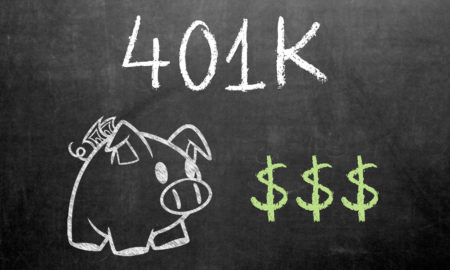

What would a 189% annualized return look like?
For most investors out there looking to grow their nest eggs, seeing a return like that would be pretty awesome. In the past year, though, index funds rose to 10%. They were managed by mutual funds at 13.5%, and hedge funds at 19% seem much more in step with how investing works. Certainly most investors are not seeing a three-digit ROI percentage on their average stock pick. Surprisingly, though, once you check the fees that go into mutual and hedge funds, it looks like the index fund actually wins out.
Yet, there is such an investment that can potentially give you that 189% or three-digit ROI.
It’s just not on Wall Street; it’s in the cloud.
The 189% investment is in acquiring online businesses, then holding them or flipping them for a profit. It’s similar to investing in art or in real estate, but on the internet. Most other investments you make give you very little control over what you can do with them.
Outside of purchasing the stock or bond, there’s nothing else you can really do to increase their value. However, this isn’t true for online businesses, where you have more control over the investment than perhaps any other investment vehicle out there.
It’s not a secret either that many millionaires made it by owning a business. Because you can control how your business operates, you can often direct a business towards explosive growth that is not available with other forms of investing.
That said, businesses are hardly passive endeavors. Unlike a mutual fund or a 401k, there are usually a lot more moving parts and things to manage with an online business. This can make acquiring a business as an investment strategy a tough call to make.
The cool thing is that if you focus solely on online businesses, you minimize your time investment considerably.
While a pizzeria might take the work of at least three people working 40 hours a week to make its $3,000 per month profit, an online business might take one hour a month to keep its $3,000 per month stable.
Though it may also take more than one hour to get such a business started, once it is up and running, the amount of maintenance drops dramatically in comparison to a traditional business.
In order to understand how you can benefit from businesses in the cloud, you must first understand a little bit about digital assets in general.
Investment is applied knowledge after all.
The World of Online Businesses
In today’s market, there are hundreds of thousands of online businesses maturing every day. When I call a business “mature,” I mean they have an established track record of profitability and scale. With a mature investment, there are data points enough to say whether something will be a good or a poor purchase.
Ten years ago, that was hardly the case for online businesses. The internet was just getting up and running. Today, the internet is everywhere. The flow of business has moved online in a dramatic way.
What Is an Online Business?
Before you can decide to invest in an online business, you must first define what one is. An online business is simply a business that exists completely online. And before you even decide to invest, let’s say in an online business, it might be best to check out ecommerce fulfillment trends to see where you could make a hit on the market.
For instance, you might have an e-commerce store with a warehouse full of physical goods, but none of those physical goods are sold via a traditional storefront or mall. Rather, all those products move out of the warehouse by people entering their credit card information into your merchant account before you ship the product to their house.
Online businesses can take many forms, though. Some of them can be software based, where people are paying a monthly fee to use your software. Other online businesses can make thousands, even tens of thousands, per month without having any products at all. They simply show ads on their sites or use affiliate links to earn a commission without owning a single product or service they are selling on the website.
Different types of online businesses have different advantages and disadvantages. If you’re interested in the details, have a look at the post I did on the 11 most popular online business models. For our purposes in this post, it’s only necessary to know that online businesses can usually be boiled down to three main types of monetization:
- Physical products that are sold
- Services rendered
- Content-based sites with advertising
Who’s Buying Online Businesses?
If you’re making an investment, it’s always wise to understand your own motivations. What are your long term goals in acquiring an online business?
To this end, there is a plethora of different styles of online business buyers you should familiarize yourself with in order to understand what type you are. It is important to know both the style of the business model you are looking at and what kind of buyer persona benefits the most from that specific business model.
Every investor has different goals, and your acquisitions should align with your unique goals.
If we want to boil down the different kinds of business buyers, we can look at seven buyer personas:
- Newbie Norm
- DIY Dave
- Lifestyle Larry
- Portfolio Paul
- Strategic Sally
- Flipper Fred
- Investor Ivan
Newbie Norms are people brand new to buying online businesses. This is the persona where everyone starts. They might be a bit concerned if what they are buying is a legitimate business or not, simply because they don’t know exactly what to look for yet. For people just starting out, we recommend you learn how to perform due diligence to make sure the first business you buy is a healthy, clean business that can make you a good monthly dividend.
DIY Dave is the next stage that most Newbie Norms go into after buying their first couple of businesses. These people tend to see opportunities with the business they bought for improvement. It might be better content that will convert higher, or a traffic source that they know really well that the business they’re buying is currently not using. Either way, these people tend to love doing everything themselves. While doing it yourself is great at the start to learn how to actually do it, it is important not to become TOO much of a DIY Dave. You will want to learn delegation if you want your business to take off in a big way.
Lifestyle Larry is likely the “make money on the beach” image people have for most internet marketers. These people bought a business that is super low maintenance that might take an hour or two a week, which ultimately funds their lifestyle. These kinds of buyers are more interested in hanging out and enjoying life experiences versus worrying about growing a large financial nest egg.
Portfolio Paul investors are probably the most similar to a mutual fund or index fund investor. They are diversifying their acquisitions across many different business models, but usually only into businesses that take a minimal amount of time to manage. Portfolio Paul’s goal is to create a large cash flow based on multiple streams of income.
Strategic Sally is typically someone who already owns a business and is looking for opportunities that can add synergy to what she’s already doing. A good example of this would be a marketing agency owner who buys a software that produces testimonial videos, or a dog food e-commerce store-owner who purchases a content site all about dogs that they use to channel traffic into their dog food e-commerce store. They are looking to leverage strategic buys that benefit their other already existing businesses.
Flipper Freds are perhaps some of the most interesting buyers, which we’ll talk about more in depth later in this article. They are people who will buy a business, increase that business’s profits as much as possible, then sell that business for a big payday, thereby reaping the added value they created in the business. Typically, Flippers will focus on one kind of business model and master it. That way, they can buy the same kinds of businesses with the same kinds of problems and fix them over and over again.
Investor Ivans are very similar to Portfolio Pauls in that they are investing in many different businesses. Unlike Portfolio Paul, though, there is usually shared equity in the deal they bought. For example, they might put up the money to buy an online business, but they don’t own it completely. They might have an operator that owns the business partially and does all the work in maintaining and growing the business. Or they might be investing into a pool of online businesses where they get back returns based off earning percentages. This last style is something that has just emerged in the online business world, which is pretty exciting but also still very unexplored at this point.
If you’d prefer to passively invest in someone else’s startup, check out our Equitybee Review.
The Risky Business of Crazy ROI
It’s common wisdom in most investing circles that the higher the ROI, the higher the risk. This holds very true with investing in an online business.
These businesses can be risky endeavors. If you buy a business that gets all of its site’s traffic from Google organic search and suddenly Google penalizes that site, the asset is dead until the results of the penalty can be recovered.
Likewise, an e-commerce store’s product supplier might suddenly stop producing a core product for some reason. If that e-commerce store doesn’t have backup suppliers, they’re screwed.
The good thing about the risk associated with online businesses is that the more skilled you become, the more the risk is mitigated. There are plenty of experts who can recover almost any Google penalty, and there are plenty of physical product sellers who have a rolodex of suppliers and factories they can call upon in a time of need.
It can take time, perhaps a year or two, to master a business model well enough to know how to mitigate the risks associated with it. Even so, risk is never fully gone, just like risk is an ever present occurrence even with something as benign as mutual funds.
Obviously, when you start out, you might lose your entire first investment. That is why you should not bet all of your starting capital on one online business, but try to spread the risk with multiple smaller online businesses (but keep the same business model at first, so you can understand it better). Before purchasing one, learn as much as you possibly can about that specific business model. Just remember, though: if you never take the risk, you are guaranteed never to get the reward.
As you begin to understand a business model more intimately, you will start to get an advantage over your investing power that no veteran stockbroker could ever possibly give you. After all, most professional stockbrokers are not that much better than someone throwing random darts at a board to decide which stocks to invest in.
You can mitigate many risks by growing your skill sets, though there will always be risks. However, there is a way to mitigate risks even further.
How to Turn a Slew of Online Businesses into a Portfolio
A portfolio of business models can mitigate many risks. There a few things you will want to diversify over time:
Monetization – how the business makes money
Traffic – where the visitors are coming from to interact with your business
Business Model – what kind of site your business is (content site, ecommerce, Amazon FBA [Fulfilled by Amazon])
Having a mixture of all three of the above can save you if one kind of monetization or business model suddenly dips. This is especially true if you ended up buying an online business that is heavily affected by seasonality (such as a business that sells Halloween costumes).
For Beginners
If you are just starting out and your skills with an online business could use some improvement, the best businesses to acquire are content sites monetized via Google AdSense or the Amazon Associates Affiliate program.
These sites tend to take very little maintenance, with some owners leaving them alone for months at a time without doing much to them while they still earn money.
Creating a portfolio of Amazon Affiliate sites can also work strategically for you, since the more you sell with Amazon’s Affiliate program, the more you earn percentage wise on every product sold for the month.
A natural step up from a Google AdSense and Amazon Affiliate site portfolio would then be a Fulfilled By Amazon business (Jing Sourcing has a great guide on Amazon fulfilment here) more about Amazon, which is simply where you sell a physical product that you are warehousing with Amazon and they handle all the inventory management and shipping.
With this business, it’s up to you to source the product yourself from the factory / manufacturer and send it to Amazon’s warehouses – they take care of the rest – these days Amazon handles everything from warehousing in real life, to warehousing your data with Redshift.
When you acquire an Amazon FBA business already earning money, you can then link out your Amazon FBA listings from your Amazon Affiliate sites to drive extra traffic to the listing.
This is natural diversification as your portfolio grows, and it helps you to start to break down the different risks involved in acquiring an online business.
The next thing a portfolio manager should look at is bringing on an operator. An operator helps you manage the different businesses.
For example, if you have ten content sites, you might hire an operator that handles all the outsourcing of content creation. Likewise, you might pay someone a salary that focuses on ordering products for your e-commerce business to make sure the warehouse is never empty when orders come through.
As you grow, operators become a more feasible way to leverage and considerably expand your portfolio. You might be wondering, if these operators can run these businesses, then why don’t they just start their own?
The answer is simple: most people are too risk adverse to become a full-blown entrepreneur or investor on their own.
Where and When to Buy an Online Business?
You might be wondering at this point…
Where the heck do you find these businesses for sale in the first place?
That answer varies. There are two main places where you can find them:
Private deals – which will take a lot of legwork on your own to find
Online business brokers – which take away the majority of your legwork
Private deals can be lucrative, but if you are new to investing in online businesses, they’re not recommended. There is still too much for you to learn. For many investors, they hardly ever do private deals, always preferring the benefits that a broker provides for them.
An online business broker usually vets a business to make sure all of its traffic and earnings are in fact real. This makes it easier for an investor to do real due diligence.
Also, a business broker can make the whole process super simple for a buyer by showing them what is on sale in one place — which is exactly what we do with our marketplace.
Timing
Once you have found where to buy the businesses, you need to figure out the “when.”
First, you should have an understanding of the business model you are looking to purchase. That is why I recommend AdSense & Amazon Affiliate sites for first time investors, as these business models are pretty simple to comprehend.
You don’t need to be an expert or even know that much about the model, but having a basic understanding will be key in running these businesses.
As you go up to the more complex business models, such as software, you will want to have a more intimate understanding of that business model.
Once you have decided on the right business model to focus on, it is time to focus on creating a game plan. Ask yourself the following questions:
What is your goal with each acquisition?
Are you looking to increase each property’s earnings or traffic?
Are you wanting to funnel these sites’ traffic into other businesses like a Strategic Sally might?
Or are you looking to simply buy and hold and let the dividends come in month after month?
Once you’ve answered these questions, you’ll have a game plan. The game plan allows you to expand your due diligence checklist.
A due diligence checklist at its heart should be a list of items that will allow you to quickly deselect a business. You are looking for any reason to say no to the business. Your game plan allows you to add certain opportunistic due diligence checkpoints, too:
If you want to increase organic search engine traffic, you might look for content sites that are ranking on the 1st page but maybe not the 1st position that pops up.
You want sites that have had zero conversion rate optimization done to it, allowing you to play with the ad placements to split test and increase the earnings by finding the best placements for the ads.
The site has yet to tap into the full potential of the niche. Maybe there is only 10 articles in a niche that could support 300 profit-producing pieces of content
Once you have a basic understanding of a business model that you can wrap your head around, you should have a game plan in place and a due diligence checklist to help you both instantly say no to the majority of sites you look at and help you figure out if you can grow a given business.
At this point, you are ready to pull the trigger to buy an online business.
Mitigate Risk Up Front
It goes without saying that you should never spend an emergency fund on a business. Some people get it in their head that if they spend the last few thousand dollars they have on a business, all of their problems will be solved.
This is rarely the case and is not something we advise.
While you shouldn’t be spending your emergency funds on businesses, that is not to say that buying online businesses can’t be incredibly profitable.
The Lucrative Career of Flipping Digital Assets
As you study and continuously buy and build a single business model, you will start seeing commonalities between all of your purchases. This is an opportunity for the savvy investor. Take all the common themes and turn them into another checklist.
By the time you own a few different digital assets in more or less the same business model style, you will have a pretty good grasp on these commonalities.
That means you also know which ones can lead you to the most profit by fixing what was wrong with the business or by implementing something that wasn’t implemented.
For example, you might find that almost 100% of AdSense sites you are looking to buy do not have an email list. You could add an email list, giving away something for free such as a report or cheat sheet related to the niche the website is in, and then email this list every time you have a new article created.
Eventually, you could have a huge autoresponder email that goes out to every new subscriber that leads them through every piece of content you’ve written on the site. With this model, you’d be bringing the same visitors back to your site over and over again and creating more opportunities for them to click on your AdSense ads.
Map out everything you do to each business you take over and how much increase in profit you’ve created. This is going to help you a lot when it comes to finding more and more deals that can turn into lucrative, flippable assets.
Once an acquired business has significantly increased in average monthly earnings (say over a six-month period), it is time to plan selling off that asset.
If you had an AdSense site producing $5,000 a month and you grew that site to $8,000 per month, you’re in a good position. You may have bought that site for $110,000 using a 22x multiple (in valuations, part of the formula is timing the net monthly earnings by a multiple, typically between 18-40x to come at a fair sales price).
Yet now that the site is earning so much more, and has a longer track record of earning, you could turn around and sell the exact same business for closer to $208,000, say, at a 26x multiple, to reflect that longer history and more solid track record, or a 189% ROI, not including the $5,000-$8,000 per month you were earning during the build up of this process.
This is something we have seen people do over and over again.
The beauty of buying an online business which is already profitable is that most of the hard work is already done for you:
- Finding a proven niche that makes money is done
- The business already has traffic and sales coming to it
You just need to optimize the site.
Once you create a system for spotting these types of businesses, you can do one of two things:
- Buy and hold the online business
- Buy and increase that business’s income to flip it for a much higher price later
Either way, they are great options.
Option #1 will often pay you monthly dividends that professional stock investors could only drool over.
Option #2 can open up a whole new career or side hustle for you as a Flipper Fred, where you take these assets, improve upon the solid foundation that is already there, and sell them for a much higher ticket price, while collecting monthly earnings the whole time.
Though investing in an online business can be a risky endeavor, with due diligence and strategies in place, it can also be an incredibly lucrative endeavor.
All it takes is a game plan — plan your work and then work your plan.






